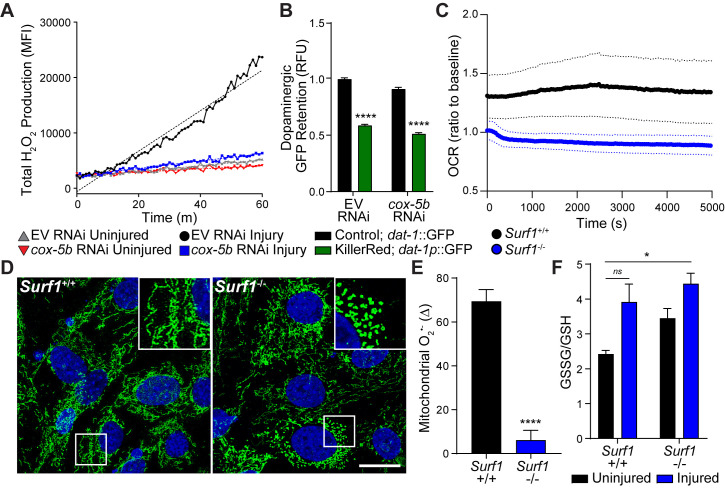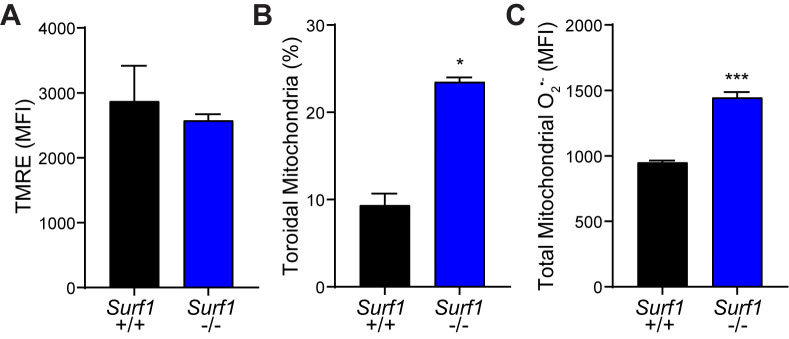Figure 4. Reducing cytochrome C oxidase prevents trauma-induced ROS production.
(A) Time-course of peroxide levels in C. elegans post-trauma. n=three repeats per group. (B) GFP retention in dopaminergic neurons of C. elegans ectopically expressing the mitochondrial-targeted KillerRed fluorophore in neurons. n=three repeats per group. (C) Oxygen consumption rate, OCR, in Surf1+/+ and Surf1-/- mouse embryonic fibroblasts. n=3 Surf1+/+, n=2 Surf1-/-. (D) Representative micrographs of TOM20 (green) and DAPI (blue) in Surf1+/+ and Surf1-/-mouse embryonic fibroblasts. Scale bar=20 μm. (E) Trauma-induced superoxide production in mitochondria from Surf1+/+ and Surf1-/- brain single cell suspensions 2 hr post-injury. n=three per group. (F) Oxidized glutathione (GSSG) over glutathione (GSH) from metabolite analysis of Surf1+/+ and Surf1-/- brain tissue subject to concussive injury. n=three per group. Data are mean ± SEM. *p ≤ 0.0116, ns (not significant, p = 0.0524) and ****p ≤ 0.0001.


